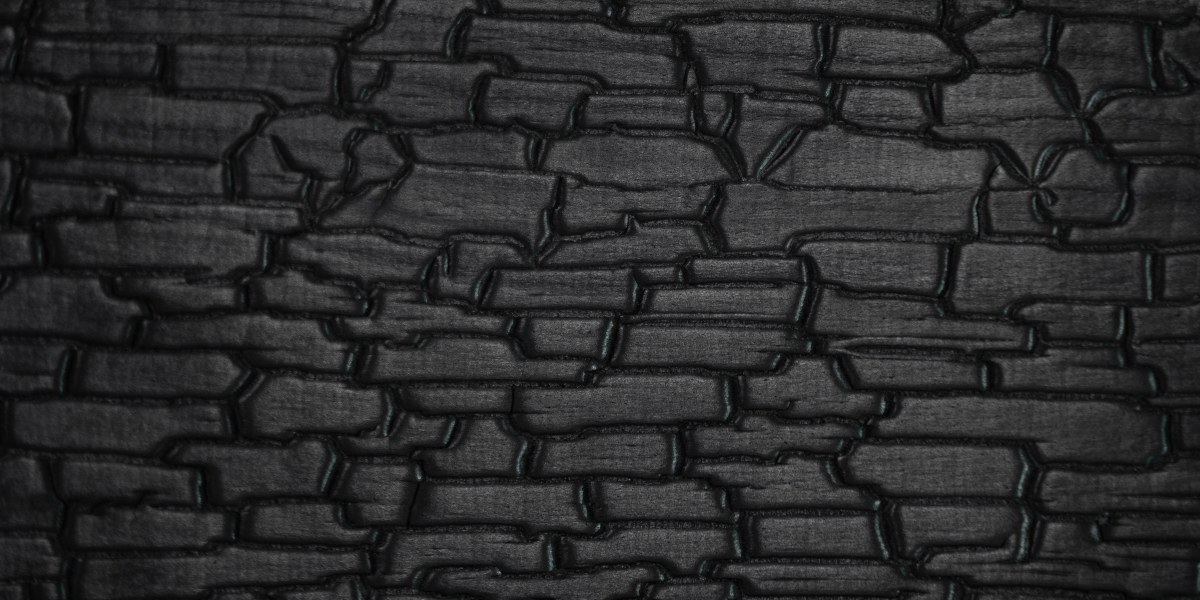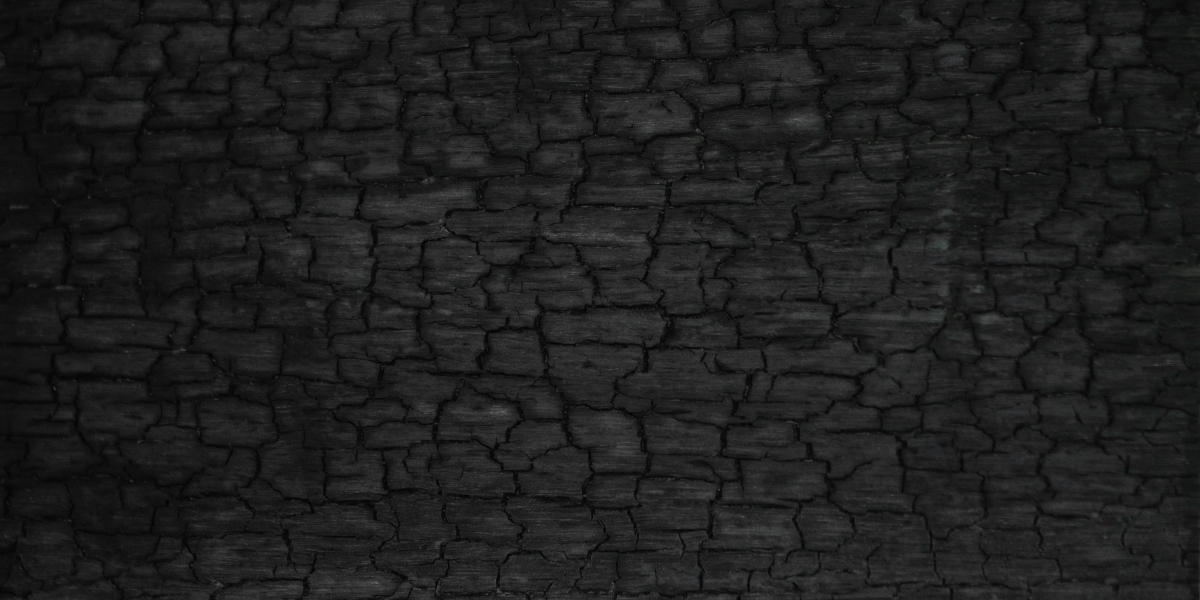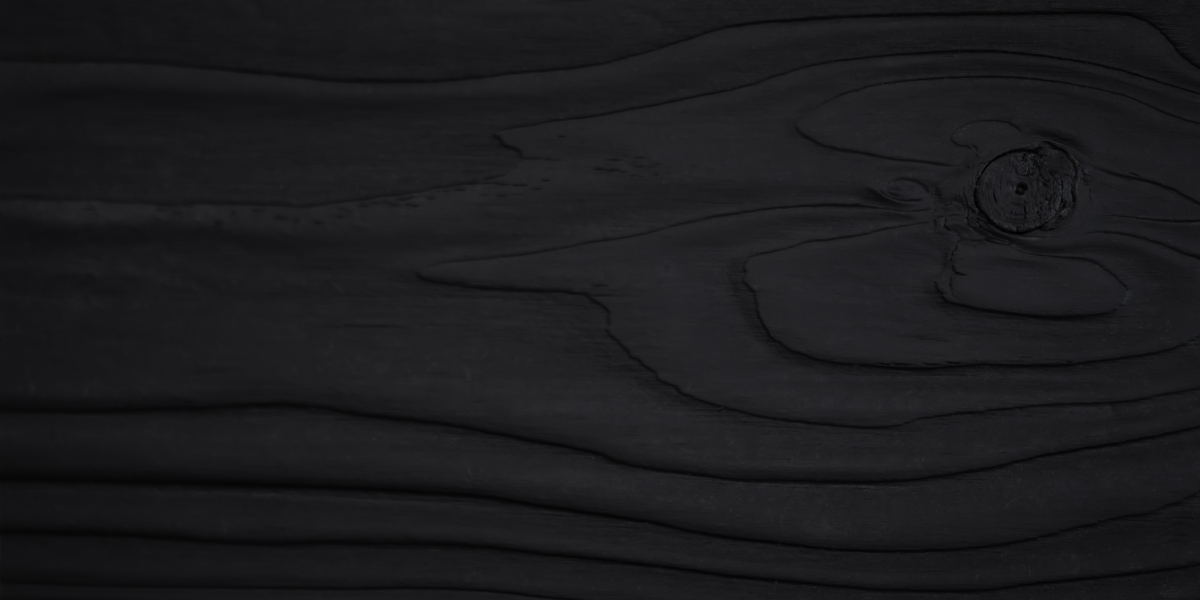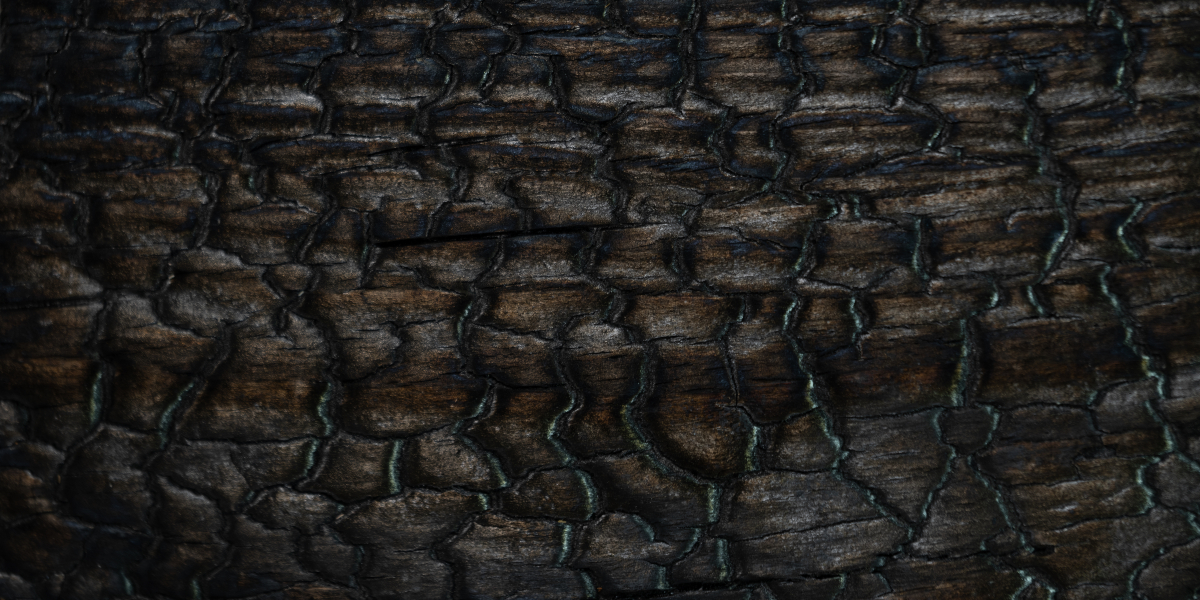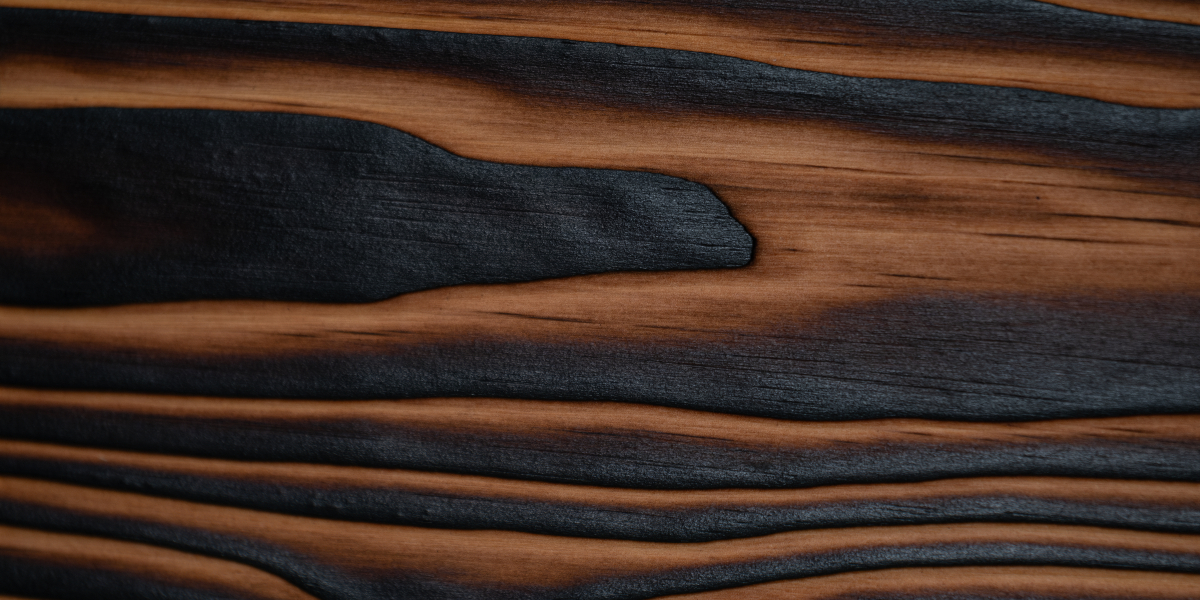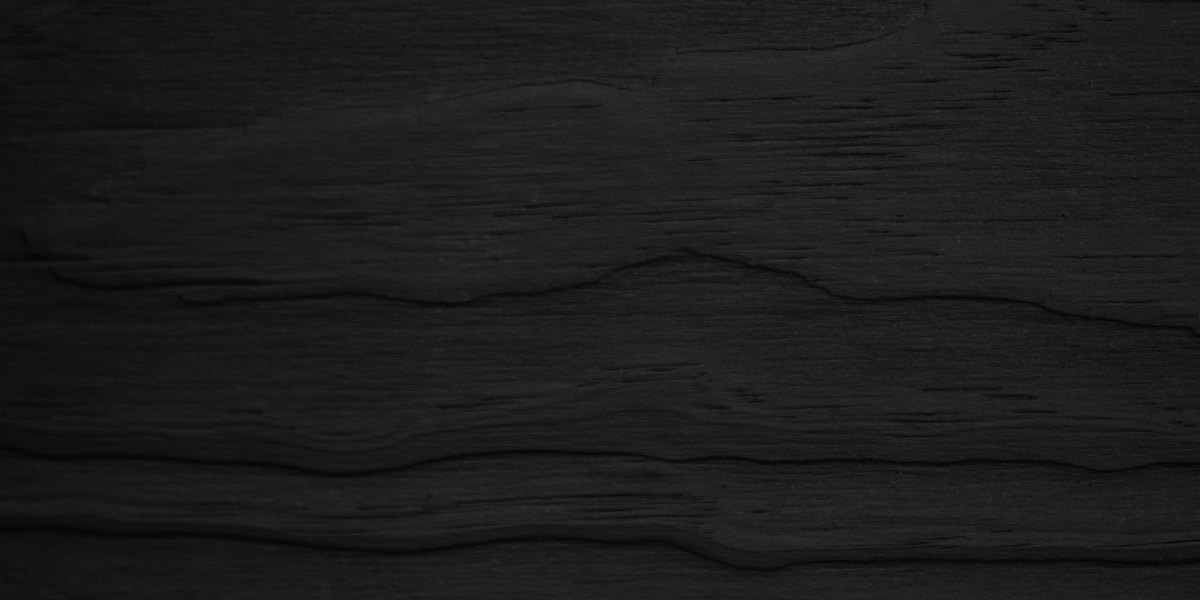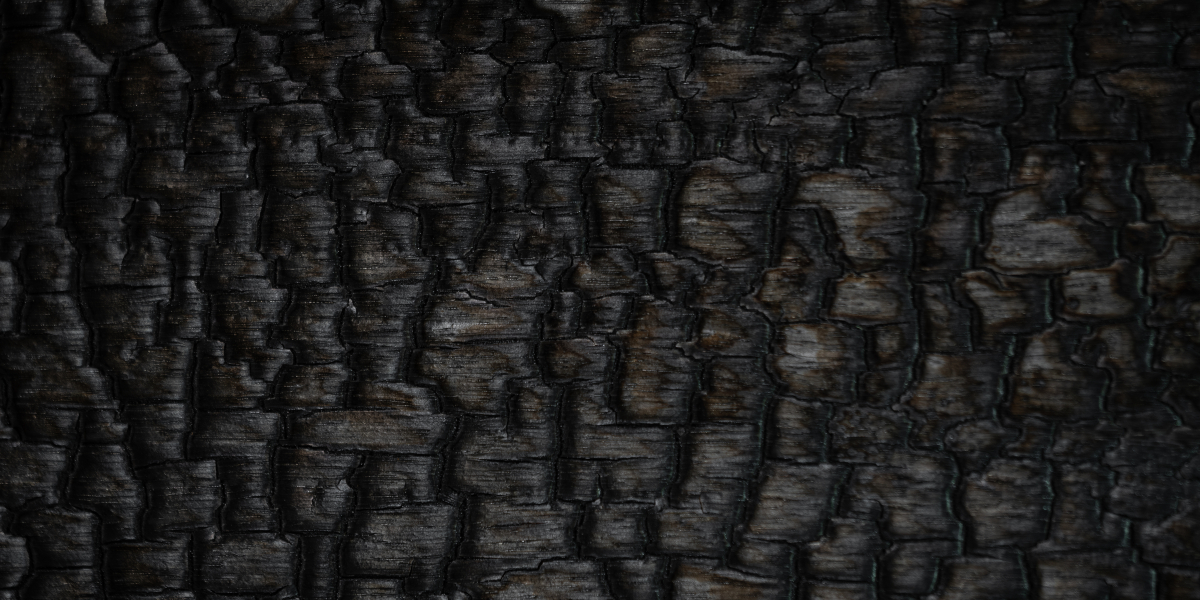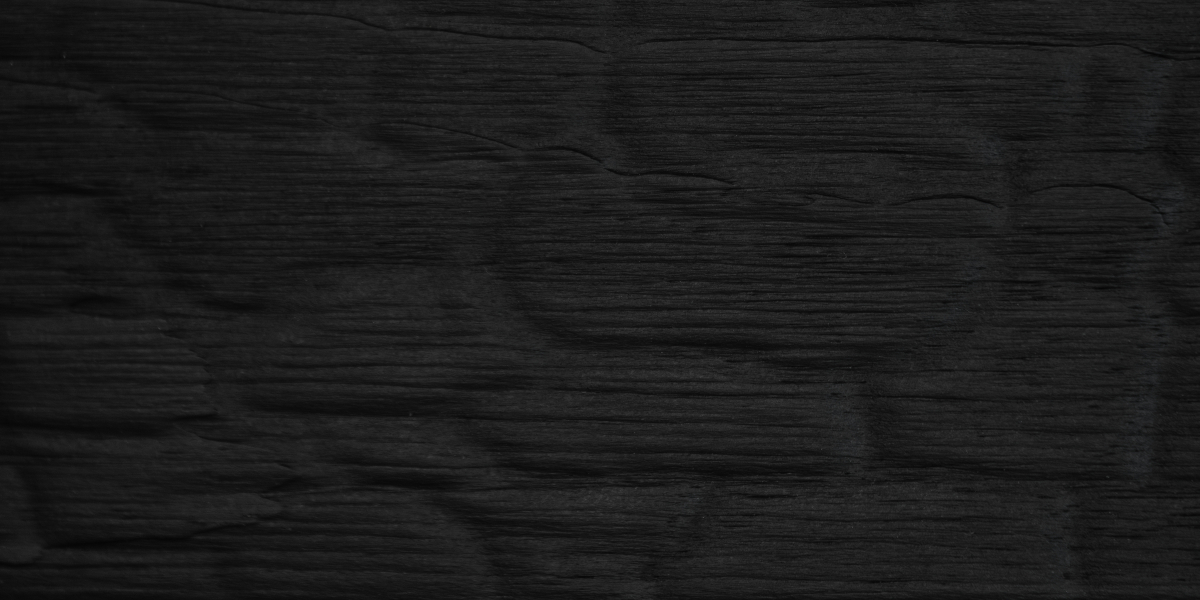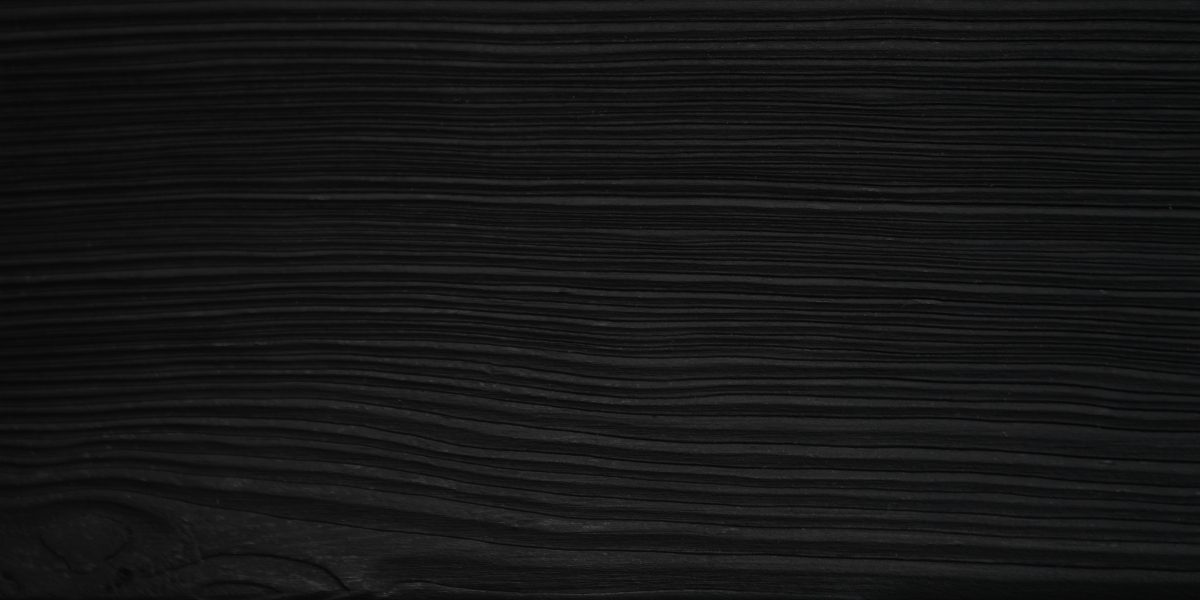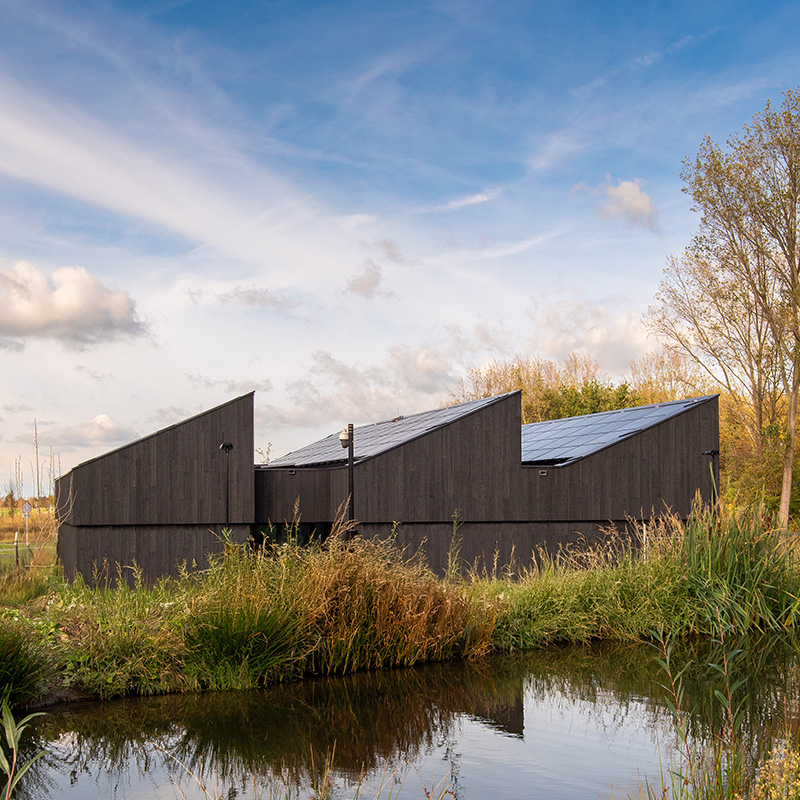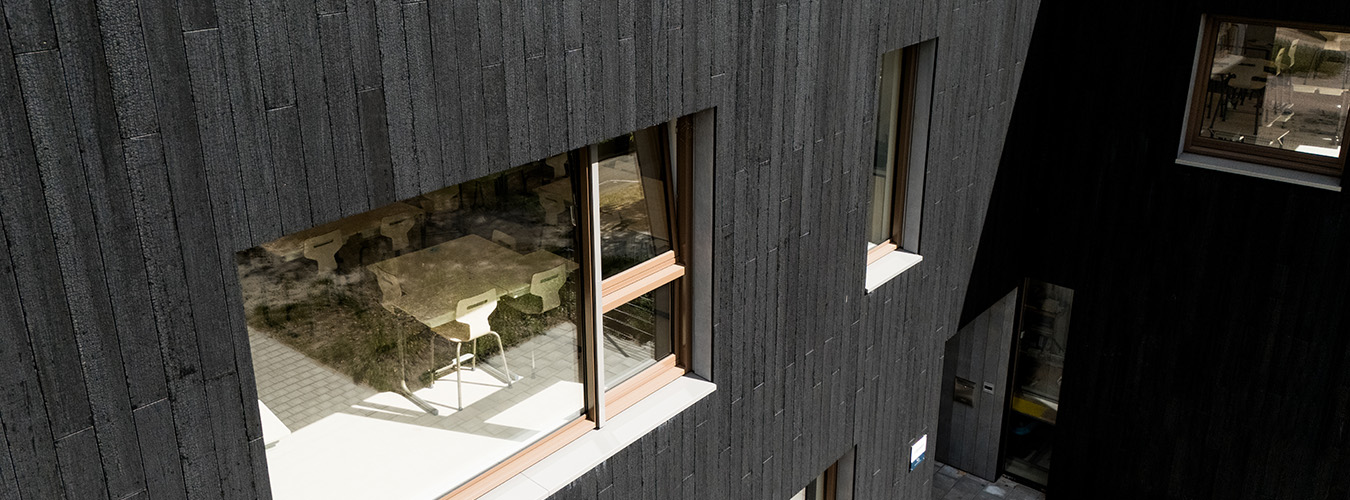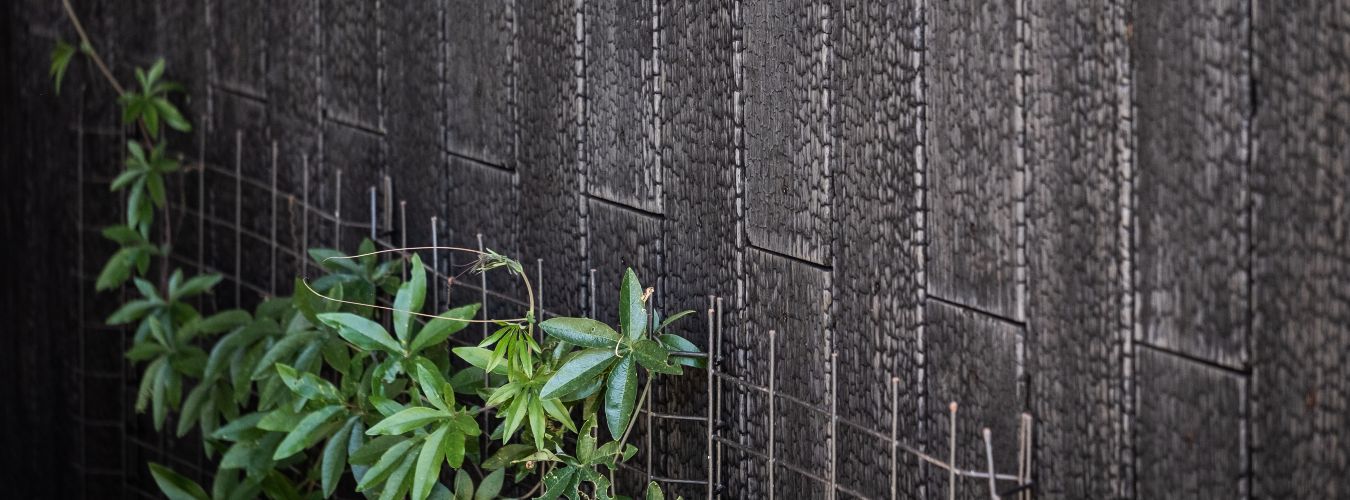Sustainability as an objective
Shou Sugi Ban is an ancient technique whose exact origins are not fully known. It is assumed that the technique originated around the 18th century in the Sendai region, a port city on Japan’s east coast. Japan is a country where humidity, insects and also mould have traditionally always threatened the construction of houses and other wooden objects. Moreover, because the amount of wood available in Japan was also scarce, something had to be invented to better protect the wood from the elements and give it a longer life.
One or more craftsmen discovered that they could better protect wood by carbonising, i.e. burning, the top layer of the wood. This gave the top layer a natural protective layer. In practice, they found that the wood then lasted longer and was less susceptible to rain and insects. Thus Shou Sugi Ban was born as a sustainable solution.
Burnt cypress plank
Shou Sugi Ban (‘burnt cypress’) is a special Japanese burning technique inspired by an ancient tradition. It involved burning softwood on one side by binding three planks together to form a chimney, then lighting a fire at the bottom. In this way, a high temperature with low oxygen was created in the “chimney”, creating a solid charred layer on the wood.
The facade parts of traditional Japanese wooden houses were given a sustainable, natural protective layer centuries ago that also worked as a fire retardant. It works as a fire retardant because the easily combustible fibres on the top layer are already burnt. As a result, the plank burns considerably less the second time.
The evolution of Shou Sugi Ban
So Shou Sugi Ban was initially mainly a practical solution for more sustainable woodworking. As it also gives the wood a unique look, over the years it also became more and more of an aesthetic choice. It was not only practical, but also simply beautiful. Shou Sugi Ban is still used in Japan today. Also in high-profile modern buildings designed by well-known architects like Terunobu Fujimori.
Shou Sugi Ban in Europe
In 2012, Shou Sugi Ban was brought to Europe by the founder of Zwarthout l Shou Sugi Ban. Our founder made the traditional wood burning technique completely his own. Not only that: he developed his own efficient production process to ensure the top quality of the black charred wood. Uniform and durable.
Now more than 12 years later, and several ovens down the line, the technique of firing has continued to evolve. The fire masters of Zwarthout l Shou Sugi Ban now burn a variety of wood on a daily basis for international projects. The types of wood used to make Shou Sugi Ban are selected for quality. Important factors that determine the quality are: the strength of the charred layer, the hardness of the wood and the appearance of the charred layer.
Zwarthout | Shou Sugi Ban
At Zwarthout | Shou Sugi Ban, we not only have a heart for wood and fire, but sustainability is also high on our list of priorities. For example, we use wood from sustainably managed forests and preferably from local suppliers, including the Forestry Commission. We also plant trees every year during the Zwarthout tree planting day.
Want to know more about our different wood species and whether Shou Sugi Ban is suitable for your needs? Then order a sample box.
